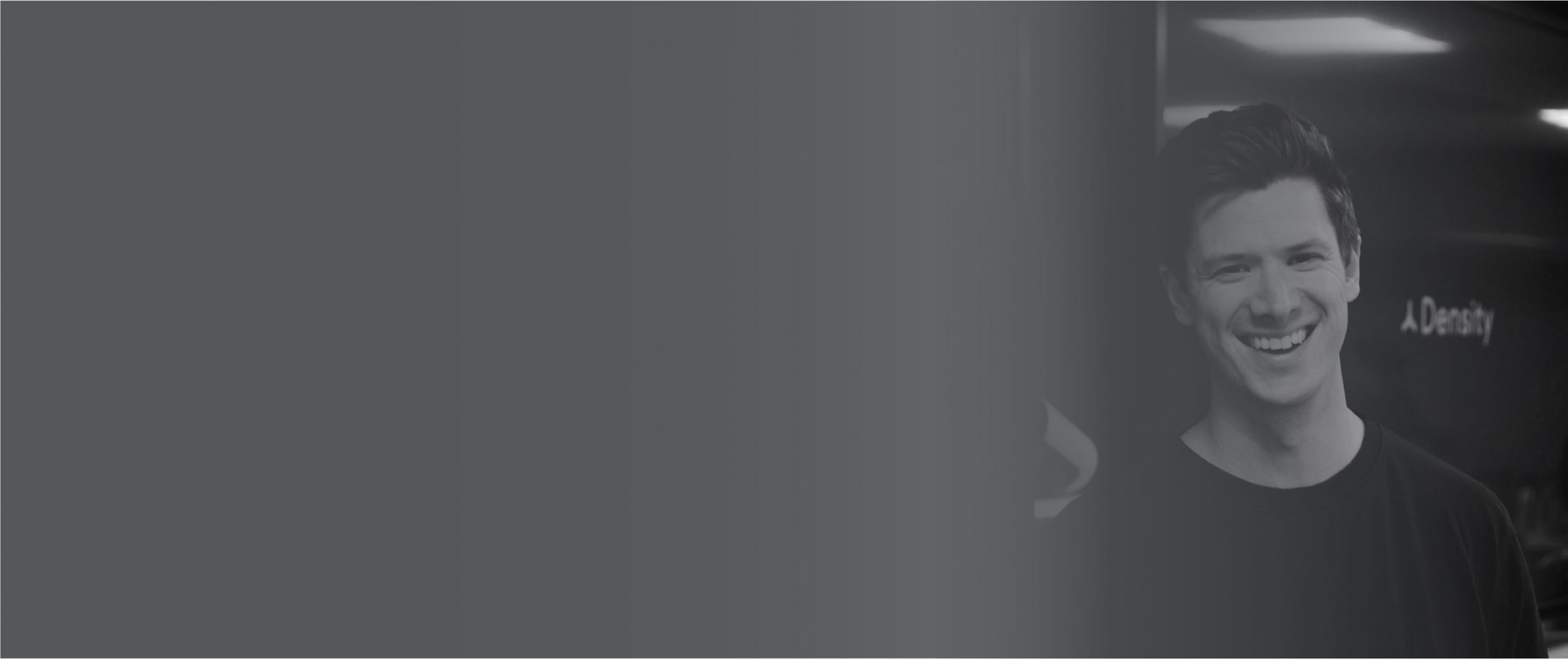The FORT Podcast: Andrew Farah
Andrew Farah is the CEO of Density, which helps reduce space waste and optimize a building’s occupancy with its combination of people sensors and people counting software.
On this episode, Chris and Andrew talk about space utilization and how Density has built its mission around helping people make the most of their leased spaces. Andrew discusses how the company came about with his 5 other co-founders, what kind of data Density provides its users, thinking of the office as a product, and the future of office work as we leave the pandemic. Enjoy!
Listen on:
Spotify
Apple Podcasts
YouTube
(02:58) – Andrew’s Background and What Lead Him to Density.io
(04:52) – The Dynamics of Having 6 Co-Founders
(08:40) – When was the moment you all decided to turn this into a full-time business?
(13:39) – What are the types of things that cities or building owners would want to know where this tech is applicable?
(16:55) – The Efficiency Problem of Real Estate
(25:44) – What has Density built to tackle this massive problem?
(27:33) – What types of data are you seeing on the dashboard?
(30:18) – Do Landlords love you or hate you?
(33:07) – How do you get to where you are using a space ‘better’ than it was designed?
(35:25) – How long is the data relevant to the user?
(37:47) – Using Data to Negotiate Leases
(40:31) – Is anyone using this data in real-time or are we looking back on past data?
(43:18) – What are some of the ways that businesses are poorly using space?
(46:36) – What does 38% utilization vs. 100% mean?
(48:25) – Thinking of the Office as a Product and Not a Static Thing
(51:38) – What is the state of the office and have you heard what office will look like over the next couple of years?
(57:34) – Is space utilization just as important for other asset classes?
(1:00:12) – How can people get in touch with you or Density?
Andrew on Twitter: www.twitter.com/andrewfarah
Andrew on LinkedIn: www.linkedin.com/in/andrewfarah/
Episode Summary
Diving right into the heart of creating practical and appealing spaces, Farah and Powers chat about the crucial role of making sure a workspace isn’t just good to look at, but also boosts productivity and ensures everyone using it can interact effectively. They stress the importance of designing spaces that really cater to the needs of the people using them, making sure every design choice, from how it looks to how it’s laid out, is made with user experience and functionality in mind. Farah points out that it’s not just about looking good – a space needs to make work easier and more productive.
Moving on, the conversation turns toward the deep connection between our physical surroundings and our mental well-being. Farah talks about how design choices can have a subtle but real impact on our mental state and emphasizes that architects and designers need to think about how a space can meet both our physical and our emotional needs. They explore different ways that the attributes of a space, like the lighting and layout, can be used to create a positive, creative, and collaborative environment.
Shifting gears to talk about technology, Farah lights up the conversation with insights into the endless possibilities that come when tech is smoothly integrated into physical spaces. They discuss how combining physical design and digital tools can enhance how users interact with a space, create adaptive environments, and enhance user experiences. Farah underscores that tech is a crucial part of shaping, defining, and enhancing our experiences of a space, helping to create environments that meet the complex needs of modern users.
Next, the conversation intertwines design and sustainability, spotlighting the importance of including eco-friendly practices in spatial design. Farah and Powers discuss how sustainability can be a fundamental part of design philosophies, underlining that modern spaces need to be at the forefront of sustainable practices. They explore using eco-friendly materials and incorporating green technologies and highlight that the real estate and construction sectors need to be leaders in sustainability, ensuring future workspaces are designed with a mindful eye on their environmental impact.
In the final stretch of the conversation, they explore the future of workspaces, with Farah providing insights into the converging worlds of remote and physical working environments. They explore how the world of work is changing, and how hybrid models, which bring together the best parts of physical and virtual environments, can be designed to meet the varied needs of the future workforce. Farah highlights the importance of flexibility, adaptability, and technological savvy, noting that the workspaces of the future need to be ready to meet a workforce that’s characterized by a wide range of needs and working styles.
The FORT with Chris Powers is produced by Straight Up Podcasts
